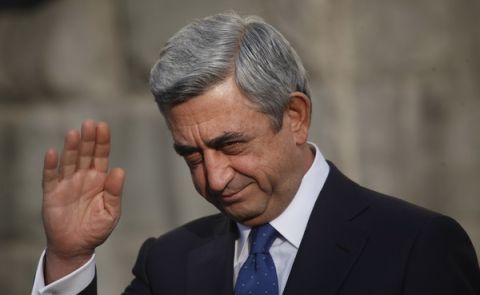
New tensions between Armenia and Azerbaijan

On 28 July, the Armenian soldier Arman Bulghadaryan was shot dead by a sniper and two other soldiers were wounded in the northeastern part of the contact line. Ten days earlier, on July 18, a soldier from the Azerbaijani border patrol service in the Gazakh region was injured by a shot fired from the Armenian side. The number of incidents that have increased in recent days, in spite of the existing "hotline" between the military of the two Caucasian states, may point to the end of relative peace in the conflict zone.
The Armenian Ministry of Foreign Affairs issued a statement to condemn the Azerbaijani soldiers’ action and accused Azerbaijan of violating the ceasefire. “The intentional and provocative ceasefire violations by Azerbaijan run counter to the commitments to respect and reinforce the ceasefire. These have been stated at the May 29 Vienna summit held on the leadership-level of the two countries. They [Baku] show disregard for the declaration adopted on 20 June as a result of the OSCE Minsk Group co-chairs’ meeting in Washington. We strongly condemn those provocations leading to human losses amid Azerbaijan’s rejection of maintaining the ceasefire regime as well as reinforcing the confidence-building and security measures. Those actions pose a risk of escalation, the full responsibility in this regard falls upon Azerbaijan,” said the spokesperson of the Armenian MFA Anna Naghdalyan.
The Azerbaijani officials reacted to these accusations. “Around 09:00 AM on 28 July, the enemy snipers fired at positions in several locations and military vehicles of the Azerbaijani Army moved in the opposite direction. The firing points of the enemy snipers were silenced by response fire”, read the official statement of the Azerbaijani Ministry of Defense.
Spokesperson of the Azerbaijani Ministry of Foreign Affairs, Leyla Abdullayeva on the other hand blamed Armenia for the constant tensions. “The only reason for the existence of tensions in the region today, and for the frontline between Armenia and Azerbaijan, is Armenia, which militarily occupied the internationally recognized territories of Azerbaijan, namely Nagorno-Karabakh and the 7 surrounding districts. As long as the armed forces of the Republic of Armenia retain their presence in the internationally recognized territories of the Republic of Azerbaijan, the likelihood of the occurrence of such incidents is unfortunately to remain high”, she said. Abdullayeva went on to say that while the Armenian Foreign Ministry claimed in a statement recently that "holding negotiations on one hand and opening fire on the other" is not right. The Armenian side fired on the positions of the Azerbaijani border in the direction of the border patrol posts located in Azerbaijan’s Gazakh District and injured a member of the Azerbaijani State Border Service.
The Armenian and Azerbaijani armies have established a “hotline” with each other and the situation on the frontline had been relatively quiet. Yet, for many months, the parties to the conflict have been unable to make any progress in the rather slow moving peace negotiations. The increasing tension could also be related to Armenia’s plans to build a third road which connects to Nagorno-Karabakh. On 24 July, the secretary of Armenia’s Security Council Armen Grigoryan announced that the Armenian government plans to build a 150-kilometer road by 2020 which would connect Kapan in Armenia with Hadrut (Khojavend) in Nagorno-Karabakh. The road would be the longest and territorially most extensive one between Armenia and Nagorno-Karabakh. This step would further undermine the efforts of a politically acceptable solution to the conflict from Baku’s point of view.
See Also


Serzh Sargsyan Rejects Charges, Backs Impeachment, and Warns of Secret Deals

Azerbaijan Confirms Execution of Terrorist Behind Embassy Attack in Iran

Turkic Leaders Adopt Budapest Declaration, Emphasizing Peace, Trade, and Digital Connectivity

International Officials Criticize Georgian Dream Amid Democratic Concerns

